The OSS From Barrie Raceway To Georgian Downs
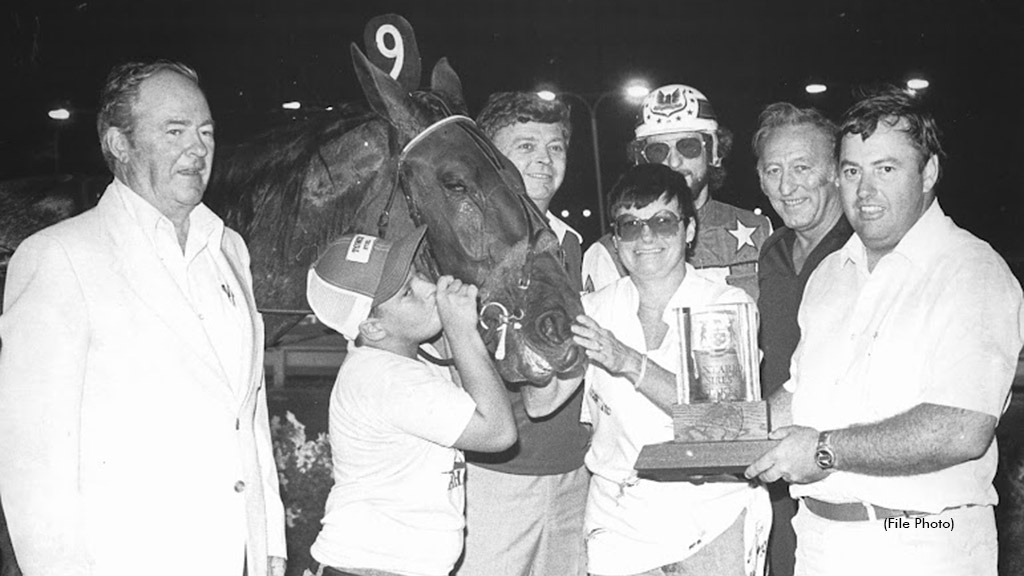
The Ontario Sires Stakes (OSS) is celebrating its 50th anniversary season this year with special anniversary dates at tracks around the province where fans will be able to watch OSS Gold or Grassroots and Prospect Series races, view memorabilia from seasons past, enjoy giveaways and more. Don’t miss the next celebration date as the OSS tour heads to Georgian Downs, where fans will be able to take in some OSS Grassroots and Prospect action on the Sunday, Aug. 11 card featuring the $100,000 Earl Rowe Memorial Invitational Trot.
In November of 2001, Georgian Downs became the first new track of the 21st century to be constructed in Canada and the 14th in Ontario to embrace slots.
Situated just west of Highway 400 near the municipality of Innisfil, Ont., it, in effect, replaced the former Barrie Raceway, which was located just five miles away.
The new track, built by the Rowe family, took some two years to complete at a cost of around $30 million after breaking ground in the fall of 2000. The track site consisted of just 75 acres about a half-hour drive from Toronto.
In this venture, a couple of third-generation members of the iconic Rowe family occupied strategic positions. Jane Rees, the granddaughter of the late Hon. Earl Rowe and daughter of Wm. Rowe, became the first President of the new Georgian Downs following her role as General Manager of the recently-shuttered Barrie Raceway. Her cousin, Scott Rowe, served as Chairman of the Board.
One of the original aims of the track was to continue many of the traditions from the former Barrie oval. A mural of the old facility was part of the new structure. The architect wanted the barn shape as a central theme and the tower evolved out of the design. With its barn-like design, there existed a family-like atmosphere between all parties.
As an example of that, a budding rose garden was created just outside the paddock. The garden was started as a memorial to Ruth Rowe, wife of Bill Rowe and mother to Jane, who had just passed away around the time the track opened. To start the project, the track’s employees donated $700.
In a departure from the past, this facility was constructed without stabling for horses, once a basic requirement for all racetracks. The era of training centres and farm tracks was in full effect. Horses shipped in on race days and utilized the 11-race paddock. This setup was gradually being used at virtually all racing locations.
The track opened on Tuesday, Nov. 13, 2001, followed by the official opening exactly one week later as they ushered in a new era in harness racing. The new raceway’s first ever winner was a grey trotting mare with the interesting name of Chinandtonic, scoring in 2:03. The driver was Jim McClure for owners Chris Ververidis, Jeffrey Gillis and Greg Marchildon.
Much of the area’s early history in OSS competition, of course, belongs to the former facility Barrie Raceway, which ceased operation in 2001. The old Barrie track first hosted OSS action rather late in the season that first year. The first visit of the travelling OSS performers was the three-year-old pacing fillies. The purse for the event was about $6,000 for each division.
The entry box drew 15 starters, which necessitated two sections. In the first group, Skippys Norene was the winner with Ken McElroy driving as she beat out Conray Goldie and Don Davies in 2:07.2. In the second grouping, the already outstanding filly Merrywood Sara was the winner for driver Don Larkin, and owned by The Merrywood Farm of Grand Bend. Their winning time of 2:04 set a new Barrie track record.
Following the evening’s racing, a reception was hosted by track management with Bill Rowe personally showing his appreciation to the visiting owners, drivers and grooms. It was much appreciated by the cast who helped stage this new series that would eventually prove to be so beneficial to the entire sport.
The old original Barrie oval continued to be home to OSS races until it was closed. A new era was dawning as Georgian Downs began to be home to these colt classics as they continue to do so.
OSS Scrapbook Memories
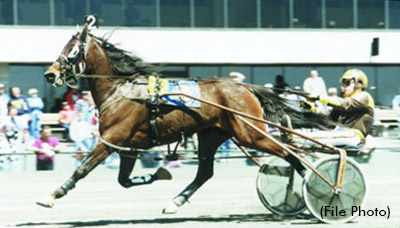
In 1997, one of the top sophomores was Armbro Plato, a trotting colt sired by the great sire Balanced Image, out of Armbro Inspiration, a Dream Of Glory mare, bred by Armstrong Bros.
After a short two-year-old campaign of eight starts, he flourished as a three-year-old. Buoyed by several impressive wins in OSS competition and a third-place finish in the Hambletonian, this fellow won more than $600,000 at age three.
He was owned by U.S. interests headed by his full-time driver Ray Schnittker, pictured above. U.S.-owned horses excelling in OSS competition was not a rarity but precious few fared better.
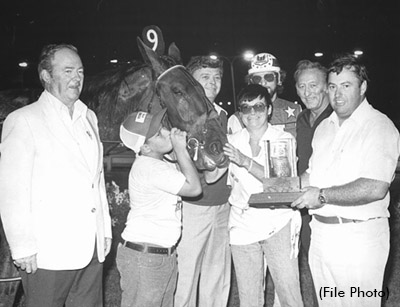
AM Playgirl, a filly pacer, is with part owners Stew and Joanne Firlotte on the far right. Jack Graham is on the far left. Driver Doug Brown is in the background. The young lad embracing the winner is Brad Firlotte, the son of Stew (co-owner and trainer) and his wife Joanne. Members of the Poinsettia stable join in the celebrations.
In 1980, AM Playgirl was the top two-year-old filly pacer in earnings with $57,793 and repeated in 1981 as a three-year-old with $70,444 in earnings.
Stew was very successful in OSS competition and first led a division when his two-year-old pacing filly Poinsettia led all competitors in her division during the 1978 season. Her earnings were slightly over $70,000 – in fact, exactly one dollar over.
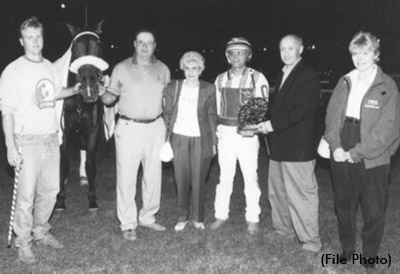
Armbro Leader appears in the winner’s circle. From left – groom Mike Keeling, A L, Wm. Wellwood, Jean Wellwood, driver Bill O’Donnell, presenter, and on the far right Paula Wellwood Keeling.
This trotting colt was one of a large number of top-notch performers to be pupils of the Wellwood Stable. In addition to his fine record in OSS competition, this horse was an O’Brien Award winner as both a two- and three-year-old in 1992 and 1993.
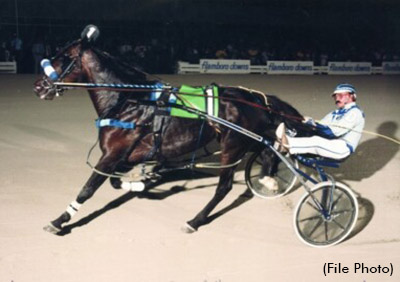
Twin B Playboy was a most dominant performer in OSS action all season long in 1985 and is shown here with trainer Dennis Duke at Flamboro.
This colt was owned by Frank Milne of St. Catharines and Gary Lariviere of Ridgeville, Ont. He was purchased for a modest $17,500 as a yearling from the McNiven family-owned Twinbrook Farms, located at Embro, Ont. In 1985, he led his OSS division in money earned with $115,822 and paced in 1:55 flat.
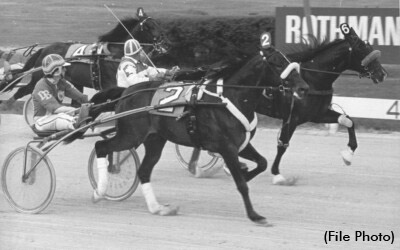
Armbro Acadian (#2), a trotting colt, with driver Dave Boughton, was a class leader as both a two- and three-year old. In 1981, the son of Dream Of Glory’s earnings total was a hefty $115,126 and in 1982, he ended the season with a slightly lower total of $98,440. These numbers were largely due to the purses offered for OSS events.
In late 1981, Armbro Acadian and his young driver Boughton made quite an impression in OSS competition. By winning an OSS event at Windsor, he became the richest horse in the then-eight-year history of the series. His total of $121,172 was an all-time high. It was a victory of sorts for the “little guy” in the sport as this horse was just the third one for owner Don Armstrong of St. Catharines.
For driver Boughton, just 21, he was finishing his first year of driving. He had rubbed for noted trainer John Burns previously, working his way up to second trainer.
The victory by Armbro Acadian at Windsor, his 10th in 20 starts, was timed in 2:03.2, a new track record at the border oval.
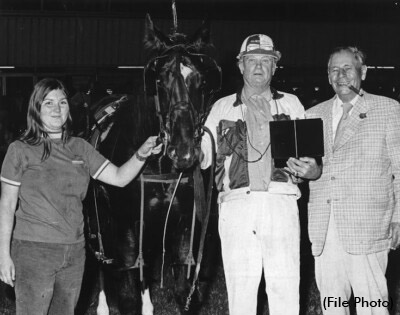
Pats Bye Bye and owner, driver and breeder Clint Hodgins are joined in the winner’s circle by Elgin Armstrong on the far right. This colt was the top money winner in the two-year-old pacing males group in 1974. He again participated in 1975 as a three-year-old, scoring five wins in OSS competition. This colt won a total of $135,000 as a rookie and sophomore, with most of it coming from Sires Stakes races. The young caretaker on the far left is Pat Belore, later Harris.
(Robert Smith / Ontario Racing)

